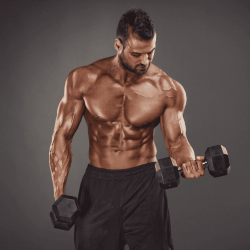30 Best Workout Skills for Winter to Stay Strong, Fit & Energized

Yo, what’s up, team! Winter’s here, and while most people are curling up with hot cocoa, we’re about to level up our fitness game! If you think cold weather means weak workouts or slow gains, think again. Today, I’m breaking down the 30 best workout skills for winter that will keep you strong, energized, and absolutely unstoppable all season long.
From indoor power moves to winter-specific endurance hacks, these skills aren’t just about survival—they’re about thriving in the chill, igniting your metabolism, and building that unstoppable winter body. Whether you’re a gym rat, a home workout warrior, or just looking for ways to stay active while it’s freezing outside, I’ve got you covered.
By the end of this content, you’ll have a full arsenal of techniques to crush winter lethargy, boost your strength, and feel more energized than ever. So, grab your sweat towel, layer up, and let’s get right into it!
1. Dynamic Warm-Ups: Activate Every Muscle Before the Cold Hits
Winter can be brutal on your muscles. Cold temperatures make tissues stiff, increasing your risk of injury if you jump straight into intense workouts. That’s why the very first skill to master is a dynamic warm-up. Unlike static stretching, which holds a position, dynamic movements actively prepare your muscles, joints, and nervous system for performance. Think leg swings, arm circles, walking lunges, high knees, and torso rotations.
Start with 5-10 minutes of movement that gradually ramps up your heart rate. The key is fluidity—don’t rush. These exercises increase blood flow, improve flexibility, and prime your body for explosive strength and endurance work.
Here’s a pro tip: integrate movements that mimic your main workout. Planning a lower-body session? Add walking lunges and hip circles. Hitting upper body? Arm swings, shoulder rolls, and scapular push-ups are golden. Dynamic warm-ups don’t just prevent injuries—they supercharge performance, even when your body is battling chilly temps.
Remember, winter workouts aren’t just about staying warm—they’re about preparing your muscles and joints to perform optimally. Mastering dynamic warm-ups will make every squat, push-up, and sprint feel smoother and safer.
2. Cold-Weather Cardio: Boost Energy and Burn Fat Fast
Winter tends to make people sluggish. But here’s the truth: the cold can be your secret weapon for burning fat and building endurance. Skill number two is cold-weather cardio, and it’s all about keeping your heart rate up while adapting to the environment.
Outdoor runs, snow hikes, or brisk walks can drastically improve cardiovascular efficiency. Your body works harder to regulate temperature, meaning more calories burned per session. Layer up smartly—think moisture-wicking base, insulated mid-layer, and breathable outer shell—and never forget gloves and a hat to protect extremities.
For indoor cardio, winter is perfect for mastering interval training. Jump ropes, stationary bikes, or treadmill sprints mimic the energy demands of outdoor activities without the frostbite risk. Alternate high-intensity bursts with short recovery periods to maximize calorie burn, elevate endurance, and train your body to perform under stress.
Pro tip: Don’t ignore hydration. Cold weather often reduces the feeling of thirst, but your muscles still need water for peak performance. Also, finish your cardio with 5-10 minutes of low-intensity movement to cool down gradually—your body will thank you for it.
Mastering cold-weather cardio keeps your metabolism high, energy levels up, and mood boosted even during the dreariest winter days.
3. Core Stability: Strengthen Your Winter Foundation
Winter workouts aren’t just about moving—they’re about control. Strong core stability is essential for balance, power, and injury prevention. Skill three focuses on developing a rock-solid core.
Core training goes beyond abs. It’s about your deep stabilizers—the muscles around your spine, pelvis, and hips. Exercises like planks, side planks, bird-dogs, and hollow holds create a stable foundation for all movements, whether lifting heavy indoors or navigating slippery outdoor terrain.
Start each session with 5-10 minutes of core activation to fire up your stabilizers. Progress to integrated moves like plank shoulder taps, mountain climbers, or cable rotations. These not only sculpt your midsection but improve posture, balance, and overall athletic performance.
Winter-specific tip: your slippery environment outside makes balance training even more critical. Practicing controlled core movements indoors enhances stability when you transition to uneven or icy surfaces outdoors.
A strong core translates to more power in lifts, better endurance on cardio sessions, and lower injury risk, making it a must-have skill for winter warriors.
4. Plyometric Power: Explode Through the Chill
Winter can slow you down—but plyometrics will fire you up. Plyometric training involves explosive, high-intensity movements like jump squats, box jumps, burpees, and clap push-ups. These exercises develop fast-twitch muscle fibers, boost your vertical leap, and enhance overall power.
Why is this essential in winter? Cold muscles tend to be less responsive, so training explosively forces your body to activate neuromuscular pathways efficiently. Start with 2-3 plyometric moves per session, 2-3 sets of 8-12 reps. Keep the focus on controlled landings—knees soft, core engaged, posture upright.
For outdoor winter workouts, plyometrics can be slightly modified: jump onto a sturdy platform instead of icy surfaces, or perform tuck jumps in a cleared area. Indoors? Use a plyo box, stairs, or even a yoga mat to safely land.
Pro tip: Pair plyometrics with dynamic warm-ups. Your joints and muscles will be primed for maximum force output without risking injury. By mastering explosive power moves, your winter workouts go from sluggish to electric, building strength, endurance, and confidence.
5. Resistance Band Training: Portable Strength Anywhere
Snowed in? No gym access? No problem. Resistance bands are your winter workout BFF. Lightweight, portable, and versatile, they allow you to hit every muscle group. Squats, rows, presses, lateral walks—you name it, bands cover it.
Winter-specific hack: bands keep tension even in cold rooms where weights may feel cumbersome. They’re perfect for full-body workouts in limited space, whether your living room, garage, or hotel room during winter travels.
To maximize gains, focus on slow, controlled movements and constant tension. Mix in compound exercises like banded squats to rows or chest presses to shoulder raises for functional strength. Resistance bands also improve joint stability—critical when icy sidewalks or uneven winter trails challenge your balance.
Pro tip: Combine bands with plyometrics or bodyweight circuits to create high-intensity, low-impact sessions that burn calories and maintain strength. Mastering bands ensures you never miss a session, regardless of the weather.
6. Mobility Drills: Keep Joints Healthy in the Cold
Winter stiffness is real. Mobility drills prevent tight hips, shoulders, and ankles that often come with prolonged indoor sitting. Focus on dynamic stretches, joint rotations, and controlled range-of-motion exercises to maintain flexibility and prevent injuries.
Key areas to target: hip openers, shoulder rotations, thoracic spine mobility, and ankle dorsiflexion. Incorporate exercises like cat-cow, hip circles, shoulder pass-throughs with a band or broomstick, and ankle rocks.
Pro tip: Integrate mobility into your warm-up and cool-down. Even 10 minutes a day can drastically reduce winter aches, improve workout efficiency, and enhance recovery. Mobility mastery also increases your efficiency in lifts, cardio, and outdoor winter activities like hiking or snow sports.
7. Strength Circuit Training: Build Winter Resilience
Circuit training combines resistance and cardio in a continuous flow, making it perfect for the cold months when energy dips. Pick 5–6 exercises targeting upper body, lower body, and core. Perform each for 30–60 seconds with minimal rest in between.
Example: push-ups → squat jumps → plank rows → lunges → kettlebell swings. Repeat 3–4 rounds. This approach boosts strength, endurance, and calorie burn simultaneously—perfect for staying warm and energized in winter.
Pro tip: Mix indoor circuits with outdoor sprints or stair climbs. This hybrid approach challenges multiple energy systems, keeps winter boredom at bay, and ensures your metabolism stays high even in freezing temperatures.
8. Breathing Techniques: Optimize Winter Workouts
Cold air can tighten your chest and make high-intensity exercise uncomfortable. Mastering breathing techniques helps you maintain oxygen flow, control heart rate, and improve performance. Skills like diaphragmatic breathing, box breathing, and rhythmic breath control are essential.
For cardio or plyometric sessions, inhale through the nose for 2–3 counts, exhale through the mouth for 3–4 counts. During strength training, exhale on exertion and inhale on the return. Proper technique improves endurance, mental focus, and recovery.
Winter-specific tip: Breathing control also protects your lungs in cold, dry air. Pair these techniques with a scarf or mask if needed, and gradually increase outdoor intensity to adapt your body to colder temperatures.
9. Kettlebell Conditioning: Full-Body Power in Minimal Time
Kettlebells are winter warriors’ secret weapon. Compact, versatile, and perfect for small indoor spaces, they allow you to combine strength, endurance, and cardio in one session. Swings, goblet squats, Turkish get-ups, and snatches engage multiple muscle groups while boosting heart rate and calorie burn.
Winter tip: The cold slows your metabolism, so kettlebell circuits are ideal to keep it revved. A 15–20 minute kettlebell flow can warm you up, torch fat, and improve muscular endurance. Focus on proper form—hips hinge, core tight, and shoulders engaged.
For beginners, start with lighter weights and controlled reps. Advanced trainees can incorporate AMRAP (As Many Rounds As Possible) circuits or interval-style sessions for max calorie burn.
Pro tip: Combine kettlebell training with core activation moves or resistance bands to make hybrid routines that target strength, stability, and mobility simultaneously. Mastering kettlebell conditioning ensures you stay powerful, agile, and energized throughout the winter months.
10. Stair & Hill Training: Winter Cardio with a Challenge
If snow doesn’t block your path, stairs and hills are goldmines for winter fitness. Sprinting or running stairs and inclines improves cardiovascular endurance, builds lower-body strength, and challenges your balance—all while keeping the cold at bay.
For stair workouts, start with 5–10 flights at moderate intensity, then progress to intervals of sprinting up and walking down. Hills? Focus on controlled climbs, pumping arms, and leaning slightly forward to maintain posture. These workouts engage glutes, quads, calves, and core while also boosting mental toughness.
Winter-specific safety: Always check surfaces for ice, snow, or slippery spots. Wear shoes with grip and layer appropriately. Even a short 15–20 minute session can outperform indoor cardio machines in both calorie burn and intensity.
Pro tip: Stair and hill training doubles as functional strength work—your legs, balance, and core get a full workout in one efficient session.
11. Bodyweight Mastery: Strength Without Equipment
No equipment? No problem. Winter is perfect for mastering bodyweight exercises like push-ups, squats, lunges, dips, and planks. These exercises improve functional strength, coordination, and endurance while being safe indoors or in smaller spaces.
Skill focus: Perfect your form. Push-ups should target chest, shoulders, and triceps with core engagement. Squats and lunges should focus on knees, glutes, and balance. Incorporate variations like decline push-ups, pistol squats, or plank-to-push-ups for added challenge.
Winter tip: Bodyweight circuits keep the blood pumping, countering lethargy caused by shorter days. Combine exercises in high-intensity intervals to maintain warmth, energy, and calorie burn without stepping outside.
Pro tip: Track reps or time yourself. Progression is key: increase reps, add holds, or shorten rest periods. Mastering bodyweight exercises creates a foundation for every other winter workout.
12. Plyometric Core Drills: Power Meets Stability
Core stability is vital, but combining it with explosive movement creates a winter-ready powerhouse. Exercises like medicine ball slams, Russian twists with jumps, and mountain climbers with torso rotation train strength, coordination, and cardiovascular endurance simultaneously.
Winter-specific benefit: These drills generate heat quickly, keeping your body warm while improving overall athleticism. They strengthen deep stabilizers that prevent injury when performing outdoor winter activities like hiking, skiing, or even running on icy surfaces.
Pro tip: Always pair with a 5-minute warm-up and controlled landings. Focus on slow eccentric movements and explosive concentric motion. This not only builds core strength but enhances balance, stability, and winter resilience.
13. Flexibility & Recovery: Winter Muscles Need TLC
Cold weather increases muscle stiffness, making flexibility and recovery crucial. Incorporate static stretches post-workout, foam rolling, and mobility flows to enhance recovery and maintain range of motion.
Target areas: hamstrings, hip flexors, glutes, calves, shoulders, and spine. Winter tip: spend extra time on tight areas, especially after outdoor cardio or resistance training. Stretching increases blood flow, reduces soreness, and prevents winter injuries.
Pro tip: Add yoga or light Pilates sessions weekly. They not only improve flexibility but boost mental focus, reduce stress, and enhance sleep quality—perfect for winter energy maintenance.
14. High-Intensity Interval Training (HIIT): Winter Fat-Blasting Secret
When temperatures drop, your metabolism naturally slows. Enter HIIT—short bursts of all-out effort followed by recovery periods. This method keeps your heart rate elevated, maximizes calorie burn, and improves both aerobic and anaerobic fitness in minimal time.
Winter tip: HIIT can be done indoors or outdoors. Indoor options include jump squats, burpees, mountain climbers, and kettlebell swings. Outdoor HIIT? Try sprint intervals on snow-free paths, stair sprints, or hill sprints. Keep sessions to 15–25 minutes for optimal results.
Pro tip: Focus on form during high-intensity bursts. Controlled movement prevents injuries, especially when muscles are cold. Pair HIIT with proper warm-ups and dynamic stretches to prime your body for explosive efforts.
Mastering HIIT in winter builds cardiovascular endurance, torch calories, and keeps your energy high, even during the shortest days.
15. Grip Strength Training: Winter-Ready Hands & Forearms
Cold weather makes gripping weights, bars, or even icy surfaces more challenging. Developing grip strength is a key winter skill. Exercises like farmer’s carries, dead hangs, kettlebell holds, and wrist curls strengthen your forearms and improve overall performance.
Winter-specific benefit: Improved grip helps with outdoor activities like carrying firewood, shoveling snow, or climbing icy trails. Indoors, it enhances lifting efficiency and supports heavy lifts without slipping.
Pro tip: Incorporate grip challenges into every session. Use thick bars, towels, or resistance bands to create varied tension. Strong hands equal stronger lifts and better stability—an often-overlooked winter advantage.
16. Explosive Upper-Body Training: Push Your Limits
Push-ups, medicine ball throws, plyometric dips, and banded presses build explosive upper-body strength. Winter’s cold can make shoulders stiff, so combining dynamic warm-ups with explosive movements ensures muscles fire efficiently.
Pro tip: Always start with a 5–10 minute mobility routine to loosen joints. Use controlled explosive movements—push fast but land softly to protect shoulders and elbows. Alternate push-pull exercises for balanced development.
Winter-specific tip: Perform some movements indoors where temperature is controlled, then gradually move to outdoor variations for real-world functional strength. This creates a resilient upper body capable of handling any winter challenge, from lifting snow shovels to recreational sports.
17. Winter Agility Drills: Quick Feet in the Cold
Slippery sidewalks and icy trails demand more than raw strength—they demand agility. Ladder drills, cone drills, lateral shuffles, and plyometric hops improve footwork, coordination, and reaction time.
Winter tip: Perform agility drills on cleared surfaces or indoors with tape-marked zones. Focus on quick, controlled movements rather than speed alone to prevent slips and falls.
Pro tip: Pair agility training with core stabilization exercises. This combo enhances balance, coordination, and athletic performance, keeping you safe and confident whether running, skiing, or navigating snowy paths.
18. Jump Rope Conditioning: Winter’s Timeless Tool
Simple, portable, and insanely effective—jump ropes are perfect for winter cardio. They improve cardiovascular endurance, coordination, and foot speed while keeping your body warm and active.
Winter-specific tip: Perform 3–5 rounds of 2–3 minutes, resting 30–60 seconds between rounds. Mix basic jumps with high knees, double-unders, or crisscross patterns to keep intensity high and challenge coordination.
Pro tip: Indoor jump rope sessions are ideal for cold days when outdoor cardio is impractical. Mastering jump rope conditioning not only boosts stamina but builds mental focus and resilience—essential for thriving in winter workouts.
19. Sandbag & Weighted Object Training: Functional Winter Strength
When the weather is harsh, traditional gym equipment isn’t always accessible. Enter sandbags, kettlebells, or weighted household objects. Training with irregular, shifting loads forces your stabilizer muscles to work harder, improving functional strength and balance.
Winter tip: Sandbag cleans, carries, squats, and presses mimic real-world tasks—perfect for shoveling snow or lifting heavy items indoors. Focus on controlled movements and a tight core to prevent injury.
Pro tip: Incorporate circuits with sandbag slams, lunges, and rotational throws. This builds explosive strength, engages multiple muscle groups, and keeps your metabolism fired up even when it’s freezing outside. Mastering weighted object training makes your body adaptable, strong, and winter-ready.
20. Winter Plyo Ladder Drills: Speed, Agility, Coordination
Agility ladders aren’t just for athletes—they’re perfect for staying sharp during winter. Ladder drills improve foot speed, coordination, and balance while keeping your body active and warm.
Winter-specific tip: Use a cleared indoor area or tape markings on the floor if snow or ice prevents outdoor training. Drills like in-and-out, lateral shuffles, and hopscotch patterns improve neuromuscular control, preparing your legs for slippery terrain.
Pro tip: Combine ladder drills with light plyometrics or core work. This elevates heart rate, builds strength, and trains your nervous system to react quickly, keeping you safe and athletic throughout winter.
21. Indoor Rowing & Ski Machines: Cardio Without Frostbite
For cold months, indoor rowing or ski erg machines are game-changers. They offer full-body cardio, improve endurance, and engage core and leg muscles—all without braving icy outdoor conditions.
Winter tip: Set interval sessions of 30–60 seconds high-intensity effort, followed by 30–60 seconds rest. Rowing builds back, legs, arms, and cardiovascular stamina simultaneously. Ski machines mimic cross-country skiing, great for functional winter fitness and fat burn.
Pro tip: Focus on form—strong leg drive, engaged core, smooth arm pulls. Tracking progress in watts or distance keeps motivation high. Mastering indoor cardio machines ensures you maintain peak fitness even when outdoor conditions are harsh.
22. Weighted Step-Ups: Lower-Body Winter Power
Step-ups target quads, glutes, and hamstrings while improving balance—crucial for icy winter conditions. Adding dumbbells, kettlebells, or sandbags increases strength and explosiveness.
Winter tip: Use a sturdy platform indoors or stairs with proper clearance. Perform controlled movements, step up explosively, and lower slowly to protect knees. Alternate legs for balanced development.
Pro tip: Combine step-ups with core exercises like hanging knee raises or planks. This enhances stability, coordination, and lower-body strength, making your legs ready for winter hikes, stairs, and snow-clearing activities.
23. Sled Push & Pull: Winter Conditioning & Strength Combo
Sled work builds explosive strength, endurance, and full-body conditioning. Pushes and pulls mimic natural movement patterns, perfect for functional winter training.
Winter tip: Even a sandbag on a cleared driveway or gym sled can work. Focus on posture—lean slightly forward, core tight, drive through legs. Alternate pushes and pulls for balanced development.
Pro tip: Incorporate sled circuits with bodyweight exercises like push-ups or squats to create a high-intensity winter workout. Mastering sled training ensures raw power, endurance, and resilience in challenging conditions.
24. Single-Leg Strength & Balance: Winter Stability Mastery
Cold weather and slippery surfaces demand exceptional balance. Single-leg exercises like pistol squats, Bulgarian split squats, single-leg deadlifts, and step-ups improve stability, coordination, and lower-body strength.
Winter tip: Start indoors to master form, then transition to outdoor variations once confident. Focus on slow, controlled movements, keeping core engaged and hips level. This strengthens stabilizing muscles around knees and ankles, reducing the risk of slips and injuries.
Pro tip: Combine single-leg strength work with balance tools like a BOSU ball, foam pad, or even a towel on the floor. Enhancing single-leg stability in winter prepares your body for uneven terrain, icy sidewalks, and snow-covered trails.
25. Circuit Boxing & Shadowboxing: High-Intensity Full-Body Winter Burn
Boxing workouts aren’t just for fighters—they’re incredible winter conditioning tools. Shadowboxing, bag work, and circuit boxing build strength, endurance, coordination, and mental focus while keeping your body warm.
Winter-specific tip: Indoors, combine 3-minute rounds of punches, footwork drills, and core exercises with 30–60 seconds rest. Alternate between power punches and speed drills for maximal calorie burn and full-body engagement.
Pro tip: Focus on tight core rotation, controlled breathing, and proper foot placement. Circuit boxing is high-intensity, keeps energy levels up during short winter days, and doubles as stress relief—a mental win for colder months.
26. Glute & Posterior Chain Focus: Winter Power Foundation
Cold weather often leads to sedentary habits, weakening glutes and hamstrings. Strengthening the posterior chain ensures power, stability, and injury prevention.
Exercises: hip thrusts, Romanian deadlifts, glute bridges, kettlebell swings, and back extensions. Prioritize controlled movements and progressive overload.
Winter tip: Engage glutes before outdoor winter activities to prevent lower-back strain. Strong glutes improve running, jumping, lifting, and balance on icy terrain.
Pro tip: Add resistance bands for activation before lifting or cardio. Mastering posterior chain strength builds explosive power, athletic resilience, and reduces winter injury risk.
27. Endurance Strength Combos: Winter Conditioning Hybrids
Combine strength and cardio for efficient winter workouts. Pair exercises like squat-to-press, kettlebell swings, or push-up-to-row in circuits to train multiple systems simultaneously.
Winter tip: These hybrid routines generate heat, burn calories, and maintain full-body strength even on short winter days. Aim for 3–5 rounds with minimal rest to maximize metabolic impact.
Pro tip: Rotate exercises weekly to prevent adaptation and keep workouts fun. Mastering endurance-strength combos ensures you stay energized, fit, and prepared for any winter challenge.
28. Mental Toughness & Motivation: The Winter Mindset Skill
Cold, dark mornings can sabotage consistency. Mental toughness is a skill—train it like a muscle. Visualization, goal-setting, and positive self-talk boost adherence to winter workouts.
Winter tip: Plan workouts ahead, layer clothing strategically, and track progress. Celebrate small wins to maintain motivation. Cold exposure itself builds resilience; embrace it instead of avoiding it.
Pro tip: Pair mental training with physical challenges like outdoor cardio or plyometric circuits. Mastering the winter mindset ensures consistency, peak performance, and unstoppable energy all season long.
29. Active Recovery Techniques: Keep Moving Without Overtraining
Winter workouts can be intense, but recovery is just as important as training. Active recovery helps maintain circulation, reduce soreness, and improve flexibility while preventing burnout.
Exercises: light cycling, brisk walking, swimming, yoga flows, or foam rolling sessions. Even a 15–20 minute low-intensity session can enhance recovery and keep your muscles warm in colder temperatures.
Winter tip: Cold weather slows blood flow, so active recovery ensures nutrients and oxygen reach fatigued muscles. Pair with hydration, proper nutrition, and sleep for optimal results.
Pro tip: Schedule active recovery on rest days or after particularly intense sessions. Mastering this skill allows your body to adapt, prevents injury, and ensures consistent performance throughout the winter months.
30. Full-Body Functional Training: Prepare for Any Winter Challenge
The ultimate winter workout skill is functional, full-body training. Exercises like Turkish get-ups, burpee-to-press, sled drags, and sandbag circuits train multiple muscle groups simultaneously while improving coordination, strength, and endurance.
Winter-specific tip: Functional training mimics real-life movements—lifting, carrying, pushing, or pulling—preparing you for shoveling snow, hiking, or icy outdoor activities. Mix indoor and outdoor variations to maintain versatility and adaptability.
Pro tip: Integrate all previous skills—core stability, plyometrics, agility, strength circuits—into functional sessions. Mastering full-body functional training ensures you’re prepared for any physical challenge winter throws at you, maximizing performance, energy, and resilience.
Alright, team! There you have it—the 30 best workout skills for winter to keep you strong, fit, and energized no matter how low the temperature drops. From dynamic warm-ups and explosive plyometrics to mental toughness and functional full-body training, mastering these skills gives you the ultimate winter fitness advantage.
Remember, winter isn’t a season to slow down—it’s the perfect time to challenge your body, boost your metabolism, and build resilience. Layer up, stay consistent, and embrace the chill—you’ll come out stronger, fitter, and unstoppable.
Men’s trending fashion and how to look attractive. Here teaching fashion, so make sure to check it out.
Men’s Fitness tips, what you eat and how to stay fit your body. The best workout and best diet plan, so make sure to check it out.
Men’s lifestyle tips, how to live a better life, and changing your lifestyle tips, so make sure to check them out.
It cannot be denied that men have finally come to their senses when it comes to good grooming and fashion statement.
Men are also equally frustrated with bad hair days in their life, even though not as annoyed as women. Even though men have short haircuts, they also face problems in maintaining their hair.
There are no formulae for success but there are some successful entrepreneur tips that can help make things a little simpler.









